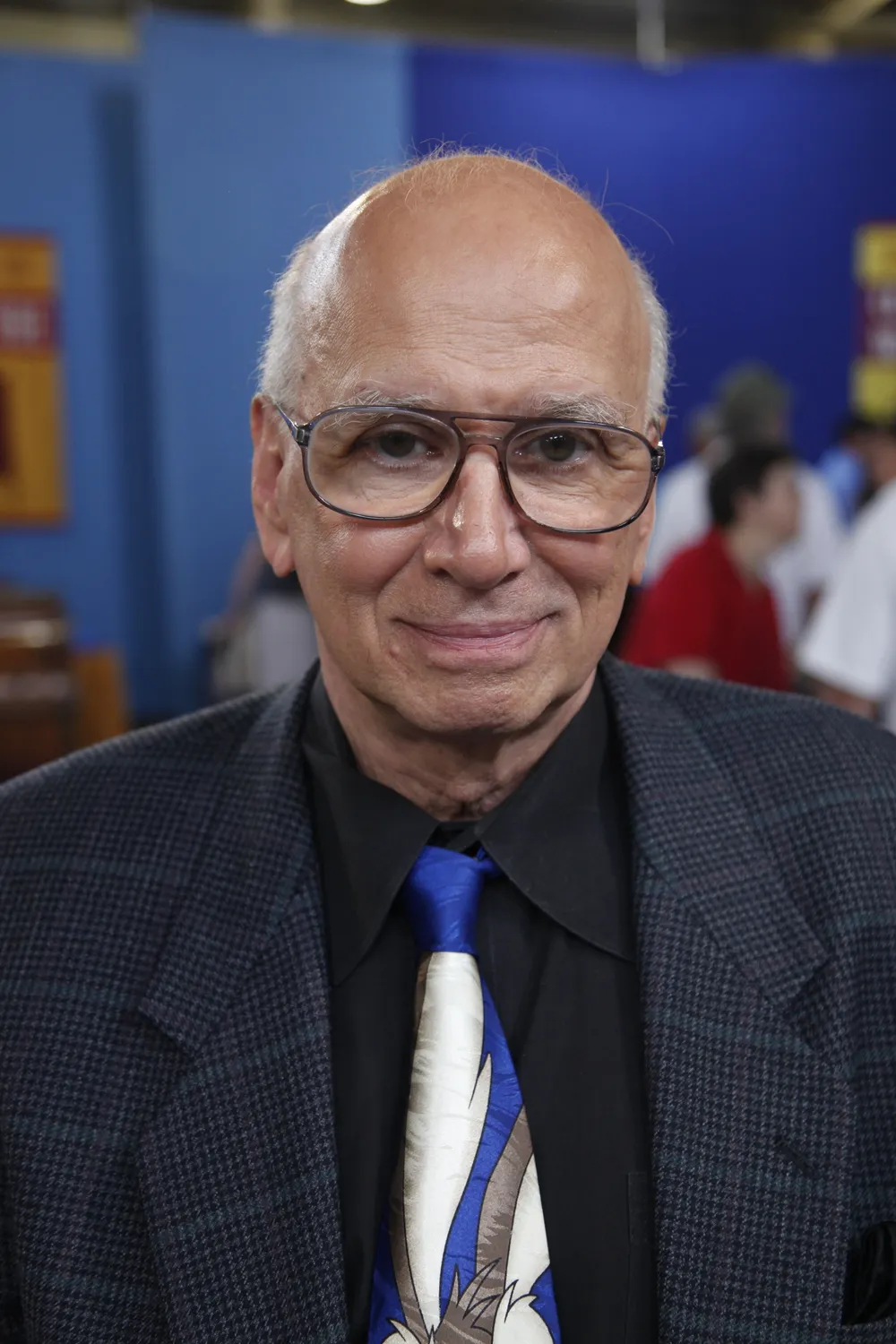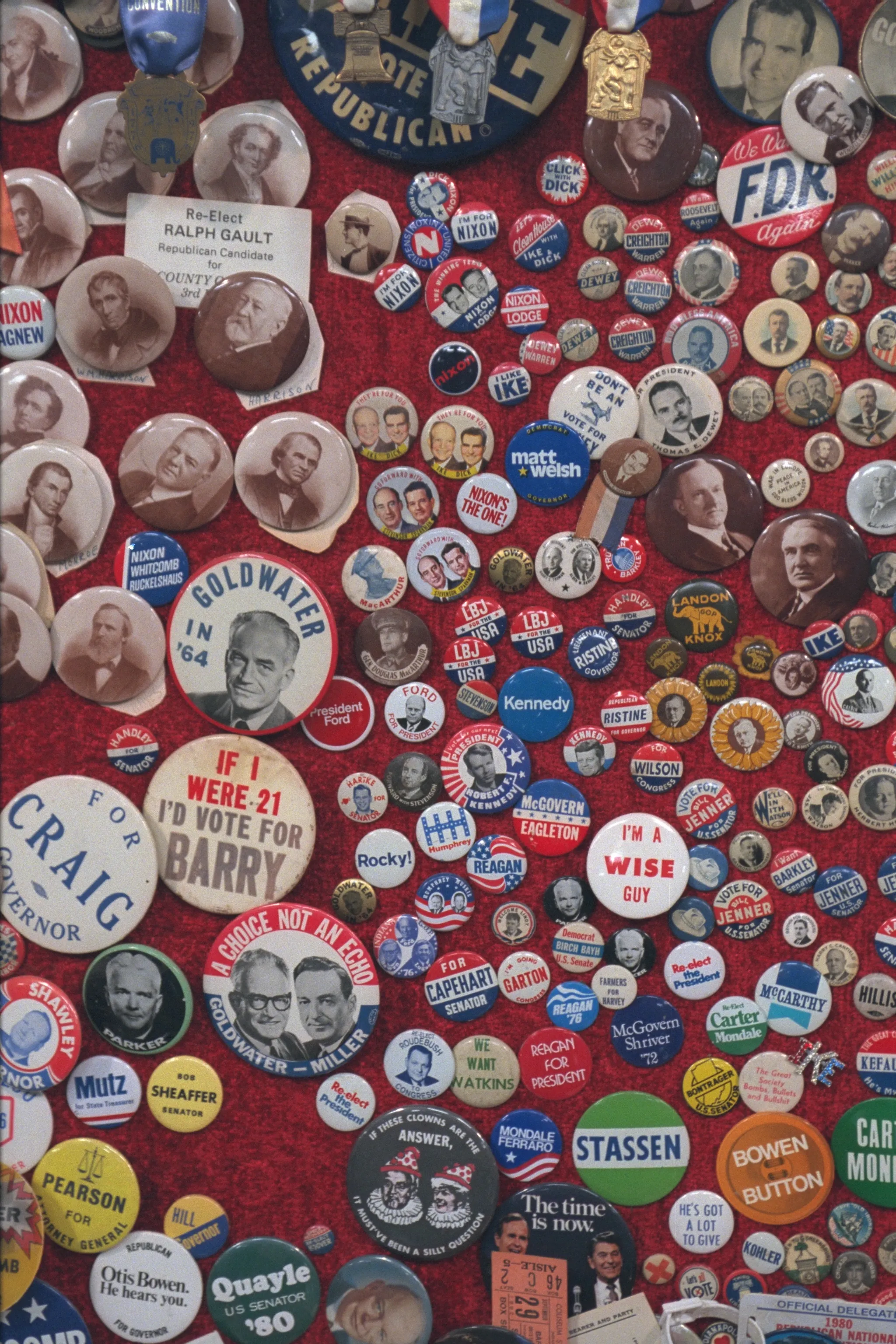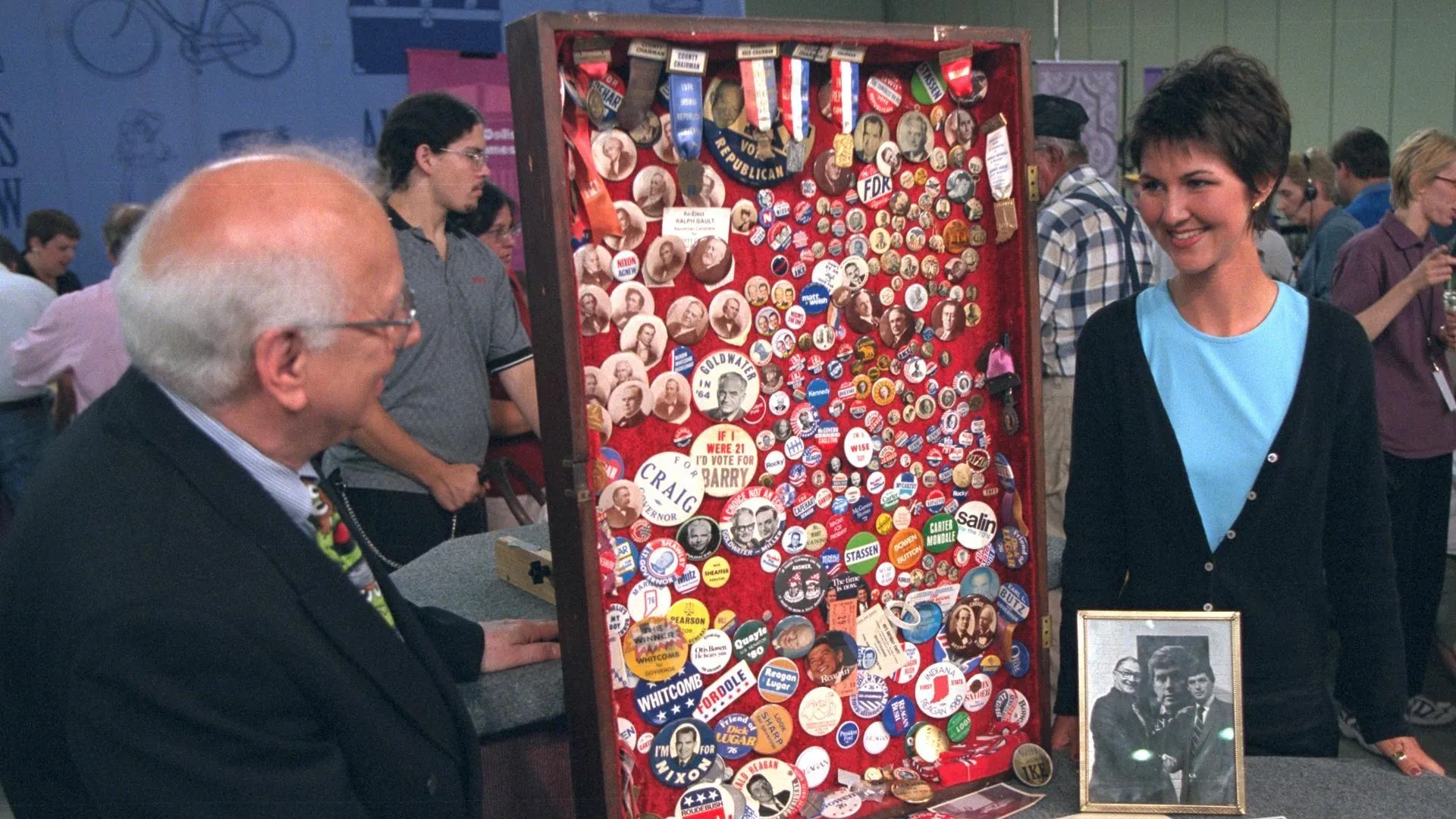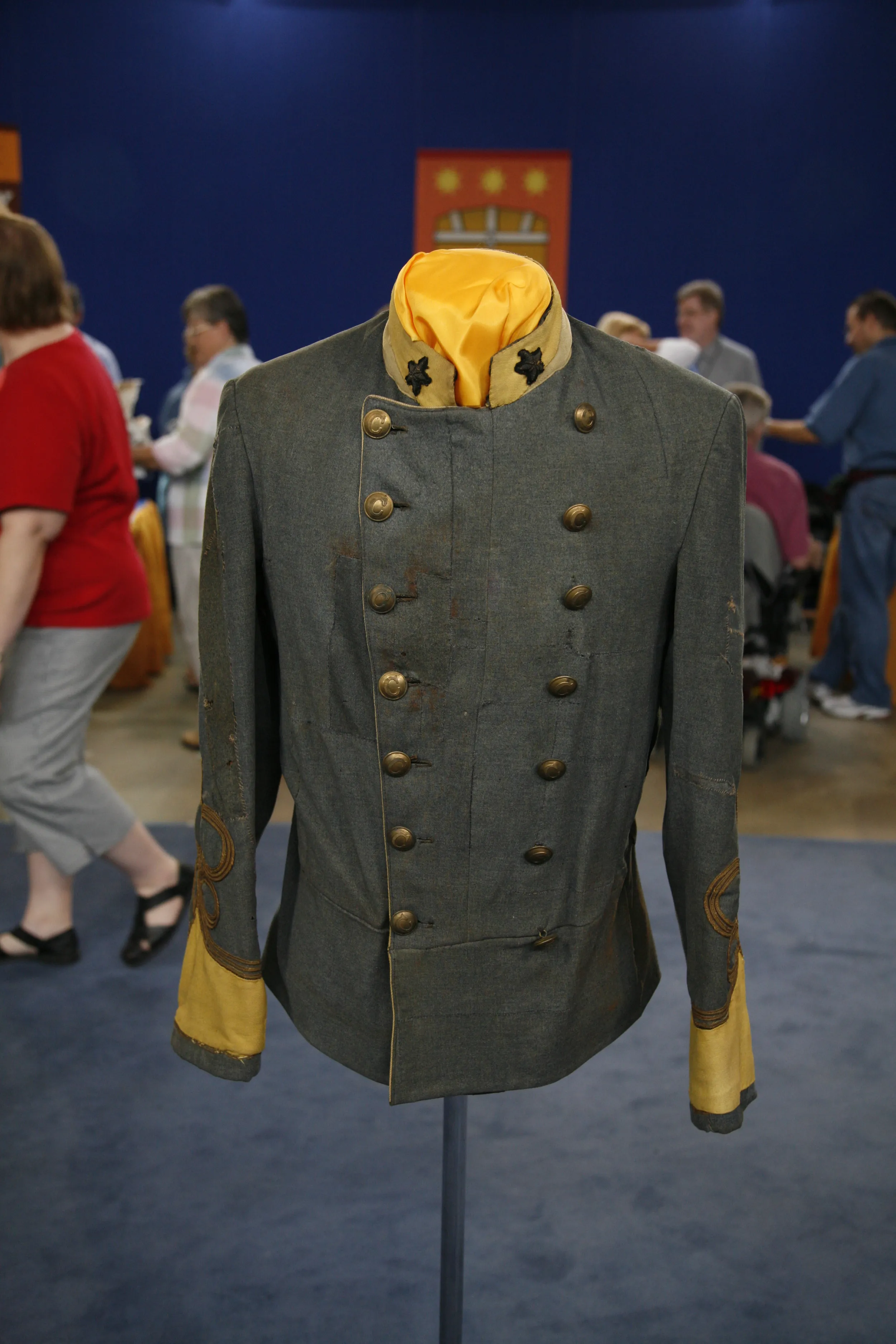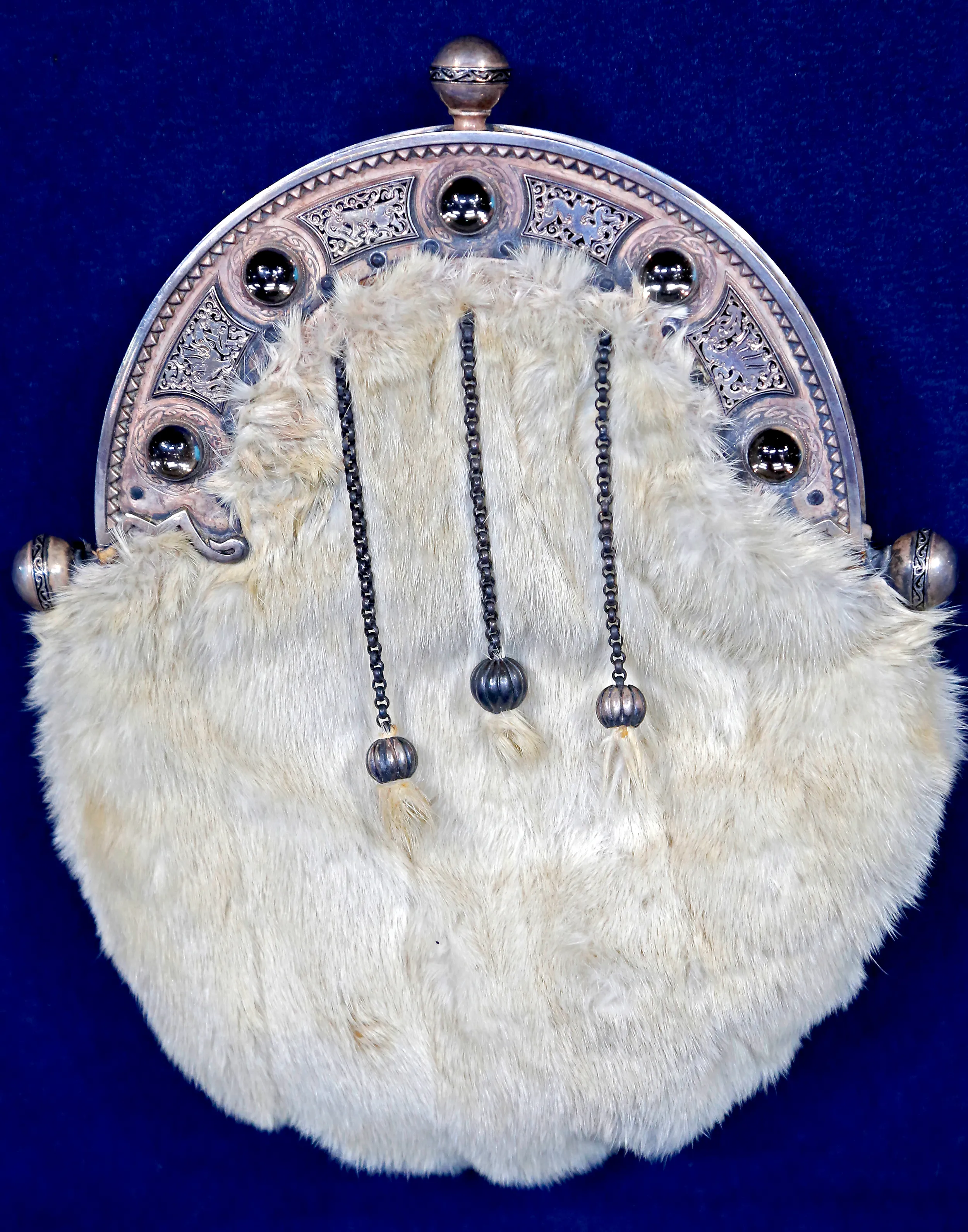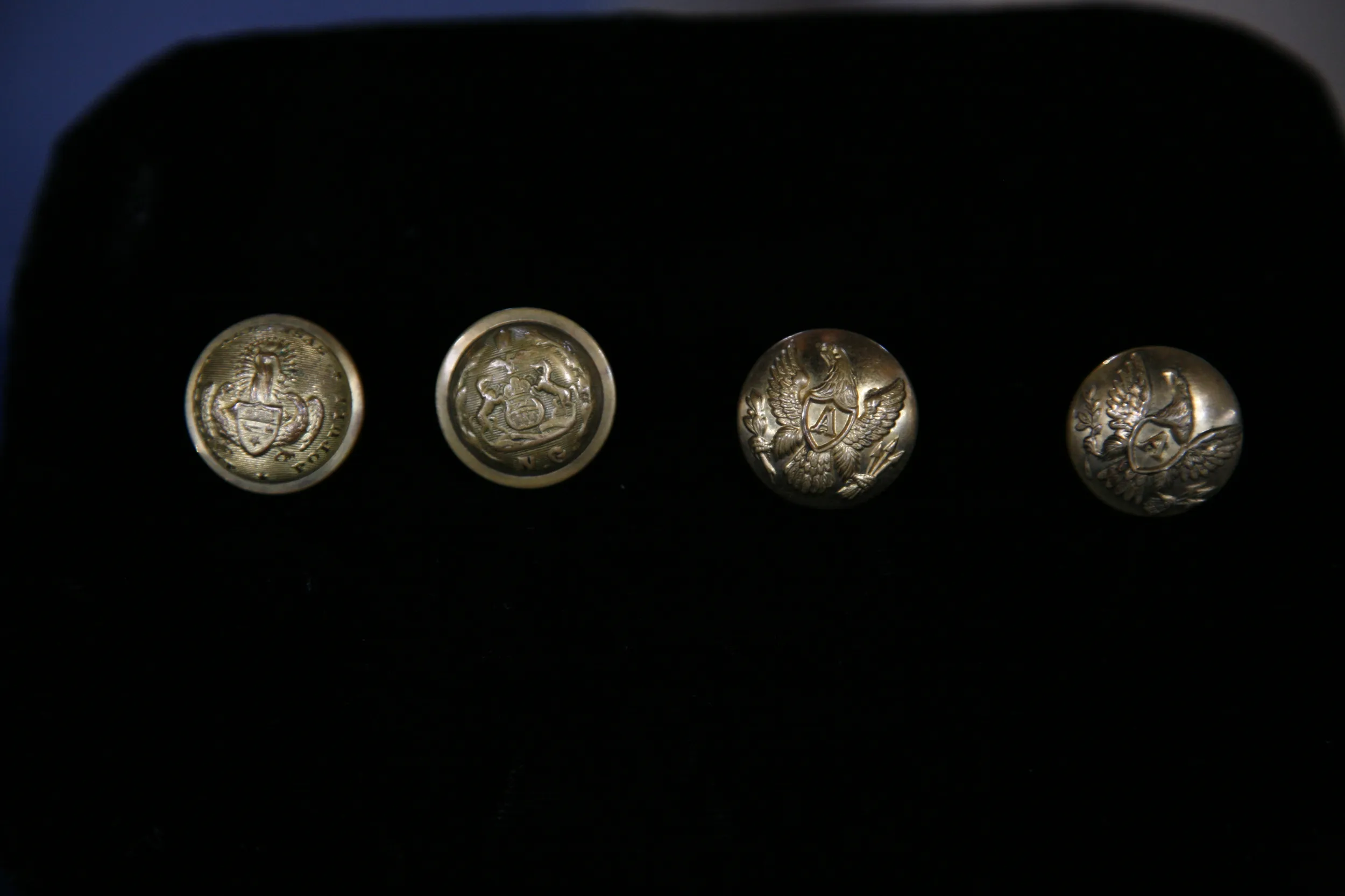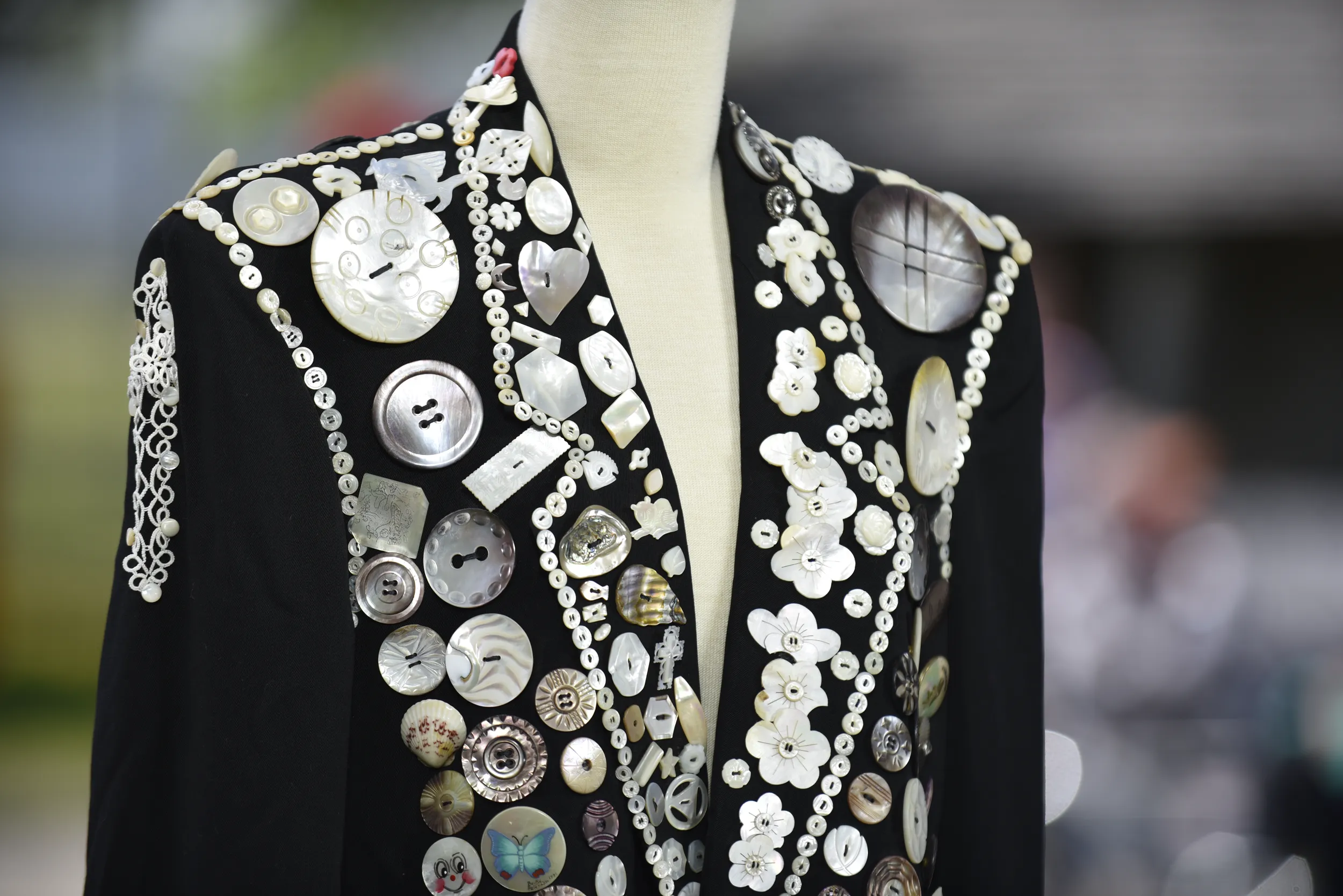GUEST: My great-grandfather started this button collection. They had an antique shop about 50 years ago, and he was really into politics, and then after he died, my grandfather added to it and had it.
APPRAISER: Is that your grandfather there?
GUEST: Yeah, this is my grandfather with Dan Quayle.
APPRAISER: Dan Quayle.
GUEST: We've had it in our family forever, and it's been through a fire and a tornado also, so...
APPRAISER: And survived all of that.
GUEST: Yeah.
APPRAISER: Doesn't seem to have done much damage to the buttons. I love political buttons. I think that they're a microcosm of political history for the 20th century. This collection is almost like a textbook of political button history, because it goes right back to the start, the first time they were available. It was in the McKinley campaign in the 1890s. Unfortunately, those are among the most common of political buttons, of the older ones, because such a tremendous volume of them were made. It was a novelty. Before pin-back buttons, people used to wear either daguerreotypes, or they would even have clothing buttons that would have their candidate's name on it. But since the turn of the century, the political button has just dominated the political advertising, until television came in. These are called jugates, which means that there's two candidates on it, the running mate and the presidential candidate. You're looking in the range of anywhere from $75 to $100 for buttons like this.
GUEST: Apiece?
APPRAISER: Yeah. This is a famous series of buttons called "flashers." They were made by a company called Variview in White Plains, New York. This particular button is for Grover Cleveland. We get buttons for Grover Cleveland, Abraham Lincoln, George Washington, because whole series of them were produced. There's a famous series that was done by Kleenex; there was another one that was done by one of the gas companies. Every time you pulled in for gas back in the '50s, you got a political button.
GUEST: Really.
APPRAISER: We usually get full sets of these coming in.
GUEST: Yeah.
APPRAISER: And people, you know, going all the way back to George Washington. Um, the 20th-century ones are interesting because they've taken real buttons and actually reproduced some very valuable buttons.
GUEST: Yes.
APPRAISER: But it's obvious, because it says on the curl either the name of the oil company or it says "Kleenex" on the curl. All of these are... they're not even reproductions, because there was nothing there to reproduce. We call these more like fantasy pieces. So all of these have just minimal value-- a few dollars each as a curiosity. But some of these that you have through here, as I said, are in the hundreds. On the whole, you have about $2,000 to $3,000 worth of real political buttons here.
GUEST: Really?
APPRAISER: Yeah, there are some very nice ones...
GUEST: Wow.
APPRAISER: ...in with the reproductions.
GUEST: Wow.
